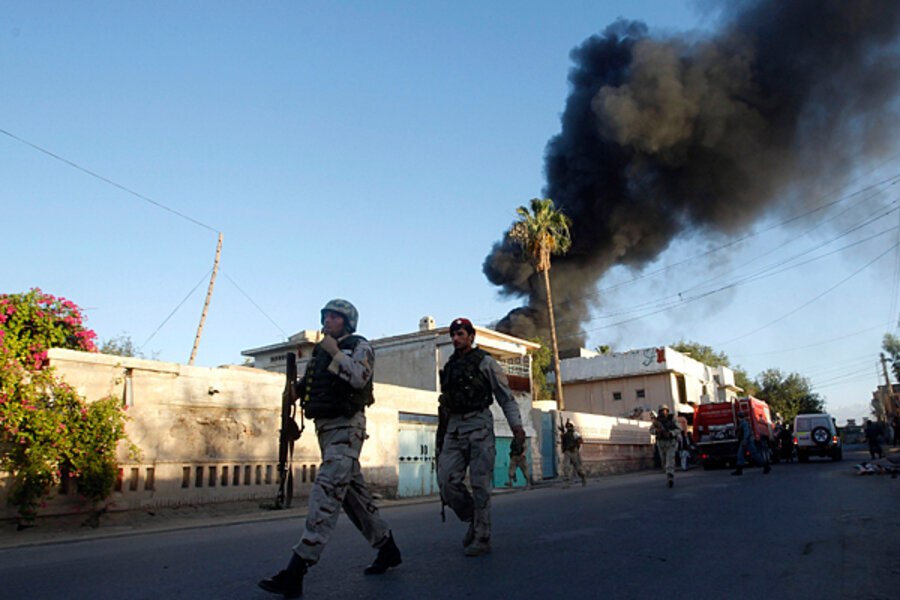Report confirms high toll from Afghan insider attacks in 2012
Loading...
The latest quarterly report from the US government's Special Inspector General for Afghanistan Reconstruction (SIGAR) reports that 15 percent of US casualties in Afghanistan from "hostile action" came in the form of Afghan police and soldiers turning their guns on their erstwhile allies.
While the report prefers the more delicate "Afghans in uniform attacking their Coalition partners," leaving the door open to the chance that some of these attacks are carried out by men in stolen uniforms and not official members of Afghan National Security Forces (ANSF), it's a safe assumption that the vast majority of the perpetrators are just that.
The number of insider attacks (Afghans in uniform attacking their Coalition partners) has been on the rise, from two attacks in 2008 to 46 attacks in 2012. The 2012 attacks resulted in 62 Coalition deaths, 35 of them US personnel. This accounts for more than 11% of all US casualties and 15% of all US casualties resulting from hostile actions in 2012... In addition, insider attacks by ANSF personnel (or individuals posing as ANSF personnel) against other ANSF personnel rose from three in 2008 to 29 in 2012 (through the end of September).
This quarter, insider attacks continued. On March 8, two US soldiers and two Afghan soldiers were killed and 10 US soldiers were wounded in Wardak when an Afghan in uniform opened fire on them. According to media accounts of the incident, Coalition forces quickly returned fire and killed the attacker. This was the third insider attack in 2013. In separate incidents this year, a British soldier was killed on January 7 and a US contractor was killed on March 8.
In addition to insider attacks aimed primarily at US and Coalition forces, insider attacks by Afghan police and soldiers against their colleagues continued this quarter. Notably, 17 US-trained Afghan Local Police (ALP) personnel in Ghazni were killed February 27 after one of their own drugged and shot them, stole their weapons, and fled, according to a media report. The Taliban claimed responsibility for that attack. In an incident on March 21, an ALP member killed five other Afghan police personnel in Badghis.
The good news is that the number of insider or so-called green-on-blue attacks in Afghanistan appears to be well below last year's pace – attributable to better vetting of recruits, the presence of fewer US soldiers, and far more controlled training environments introduced in response to last year's toll.
And it shouldn't be forgotten that the vast majority of Afghan soldiers and police are fighting for little pay, often far from home, against the Taliban, and are bearing the brunt of the casualties. The NATO coalition in Afghanistan reports that Afghan soldier and police averaged 535 deaths a month last year (6,420 for the full year). The foreign coalition's death toll for the year was 402, with 310 of those US troops.
And troops loyal to the central government are often the victims of traitorous colleagues as well, as SIGAR points out. As the US and other foreign militaries continue their withdrawal from Afghanistan (the current schedule is for foreign forces to be mostly gone by December 2014), Taliban incentives to strike out at Afghan forces, both covertly and overtly, will increase.
The Afghan Local Police (ALP) members that have been used as a sort of gendarmerie in rural Afghanistan are likely to remain a particular target, SIGAR writes.
"The Taliban’s senior leadership considers the ALP the top threat to the insurgency’s ability to control the population and threaten the Afghan government, according to (the US Department of Defense). Insurgents attack ALP units up to 10 times more often than other ANSF components," the report says. "ALP members are recruited locally, recommended by village elders, and assigned to protect their home villages. Because they are a local force, the ALP has demonstrated 'a unique resilience' against infiltration by the Taliban 'as anyone outside the area would be immediately recognized as a foreigner'" the authors write, quoting a Pentagon official.








